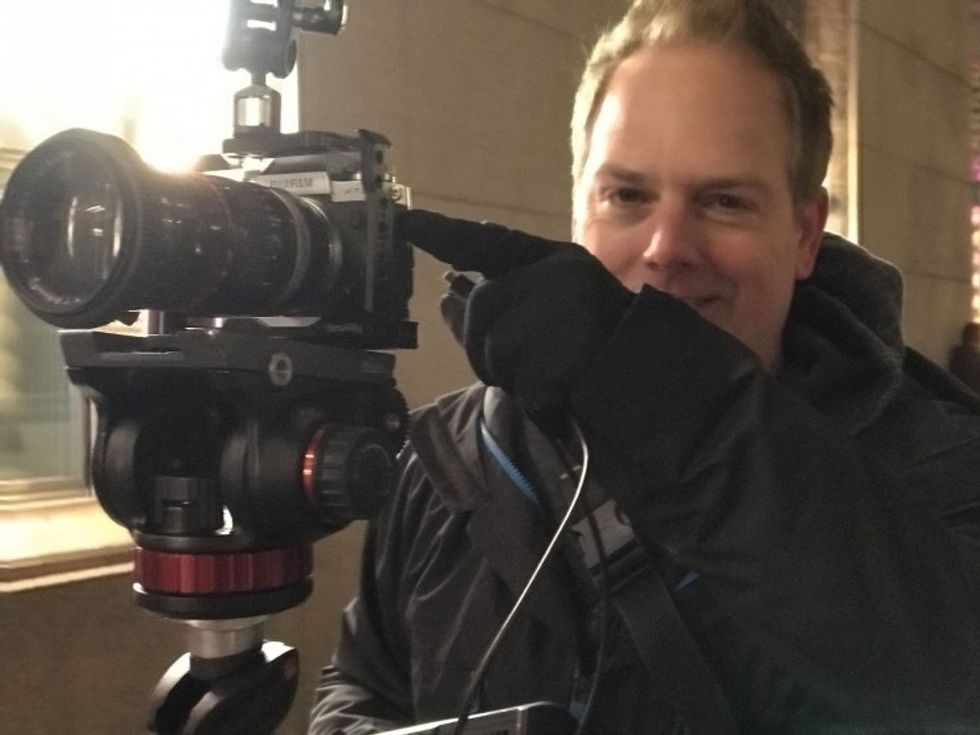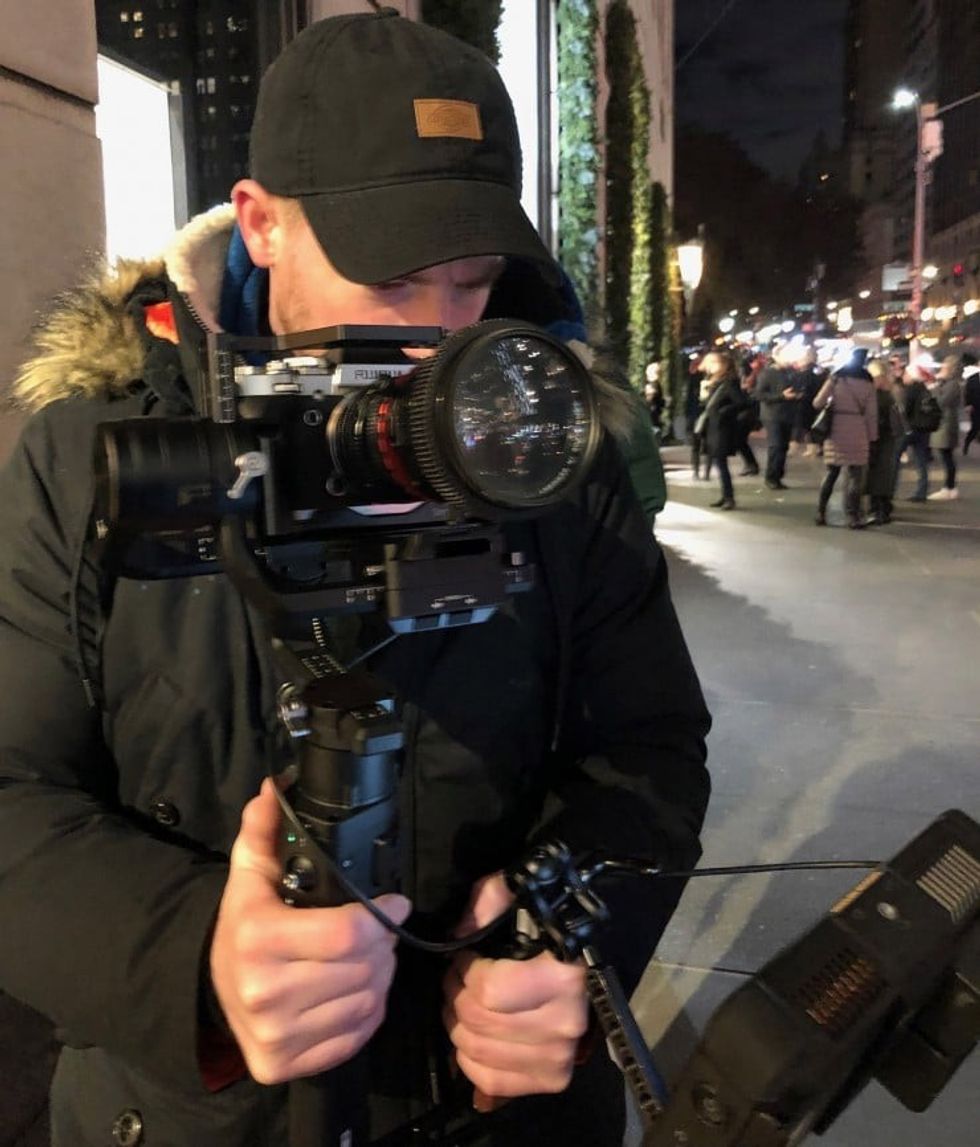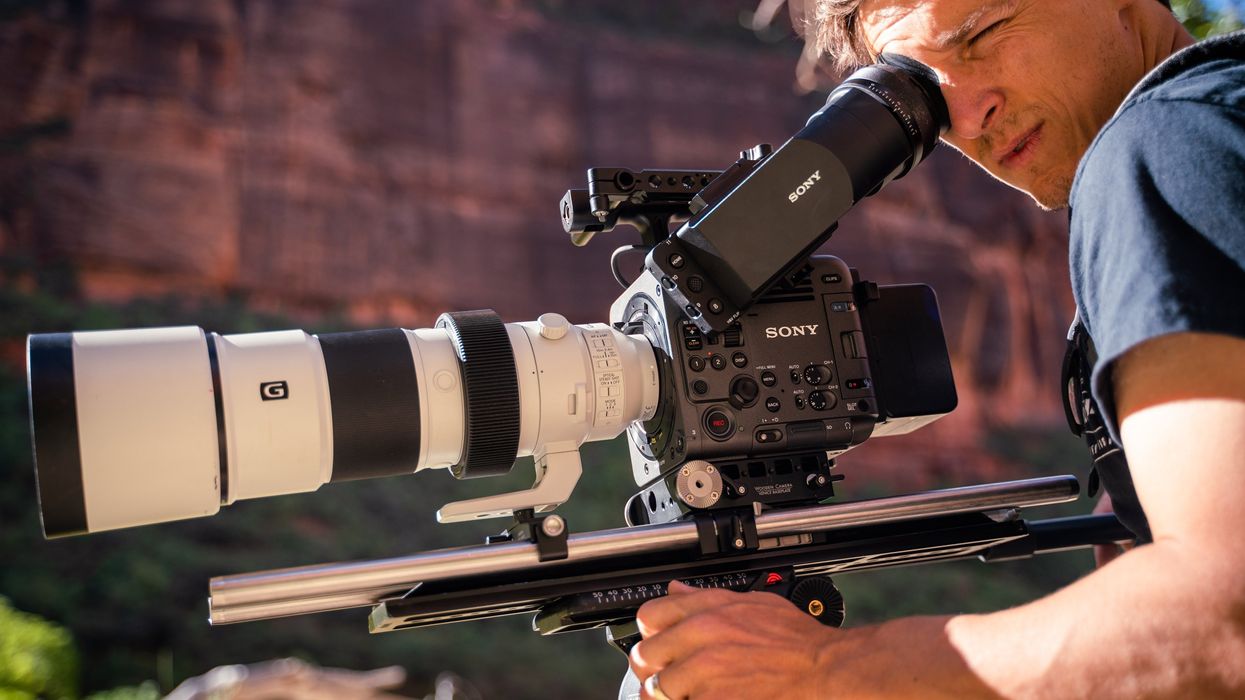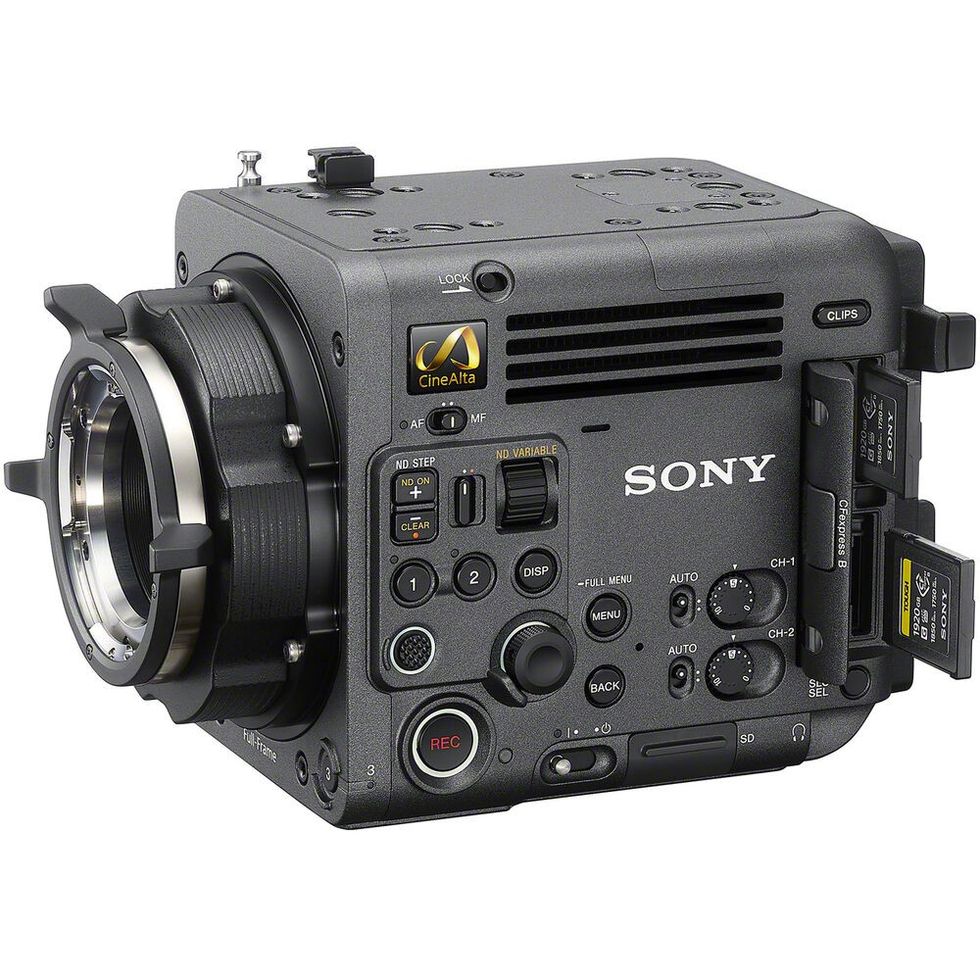Fujifilm X-T3 Review: Shooting a Short Film in 4K DCI Anamorphic
A field study review of how the Fujifilm X-T3 handled shooting in 4K DCI anamorphic for the short film 'Cup of Kindness'.

I’ve been doing the filmmaker thing for awhile now, and I’ve shot on most every cinema camera out there: RED, Arri, Sony, Panasonic, Blackmagic, you name it. But sometimes you need something smaller, like when you’re stealing shots for a personal project and don’t want to attract attention. Or when the big boys are just overkill. So I’ve been playing with mirrorless camera options from various companies for a few years to fill that need. There’s some great mirrorless camera options, but none that have really gotten me excited. Until now, with the Fujifilm X-T3.
I watched a lot of reviews of the Fujifilm X-T3 before deciding to spend my own money on it, and of course I viewed Fuji’s official big budget cinema demo film shot on the X-T3. Which looked pretty great. The camera’s specs sure looked great, too- 4K DCI 10bit 4:2:0 video internally, with HDMI recorders giving you 4:2:2 and up to 60p (60p at UHD, not DCI).
I was curious what this camera could actually do in a real-world, small-budget production environment. So I bought one for myself, intending to use it as the b-cam and timelapse camera on a project for a New York agency this past November. Well, the agency project got put on-hold. I was stuck with a couple of “free” days in NYC when the paid job went away. And rather than feeling sorry for myself I decided to make a no-budget short holiday film called “Cup of Kindness”. It’s a very short story about family and the holidays. What’s more, I decided to shoot the whole thing on the X-T3.
Why Fuji? I’ve been a fan of their color science and skintones forever. To me, Fuji’s color just looks more natural and pleasing than most of the competition. I’ve felt this way since I bought the original X100, which takes nice stills but is a sad excuse for a video camera. The X-T3 though, looked like it’d give me a viable video camera for some of the work I love to do.
The X-T3 comes with their Eterna film simulation as an option for baked-in color. It makes gorgeous images. But it also can shoot in F-log (recording internally or externally), and you can apply their official Fuji Eterna LUT to get that Fuji look in post. This opens up a ton of creative options and helps you maximize the camera’s dynamic range.
Shooting in log also lets you pull some tricks to get exactly the image you want in post. My DP, Eric Richardson, and I have been purposely over-exposing our Sony S-log systems (FS7/FS5/A7SII) a stop or two in certain situations for a couple of years. This gives us a cleaner image when we “pull it down” in post with exposure-compensated LUTs. So we brought this idea to the X-T3, filming in F-log and intentionally over-exposing most shots by a stop or so during production.
Yes, this approach to filming with the X-T3 meant we couldn’t just slap on the official Fuji X-T3 Eterna LUT in post. But it was a simple enough thing to load the Fuji Eterna LUT into LUTCalc. I created several over- and under-exposed LUTs from that. It took me 15 minutes, and I’m not the fastest LUT builder out there.
Anamorphic on the Fujifilm X-T3
When we decided to make the short, Eric asked me what kind of look I was going for. We work together a lot, so all it took was me saying “romantic” for him to get it. He insisted on shooting our film in anamorphic format. There’s just something magical about anamorphic: the bokeh, the oddness of how it compresses things, and of course the lens flares. It gives a bit of a fantasy feel. It’s romantic. It’s exactly what I wanted, and Eric had DP’d a few anamorphic film projects before. So I trusted him to bring the right magic to “Cup of Kindness”.
Eric owns an anamorphic adapter that gives a nice 1.33 optical squeeze to the image, which I de-squeezed in post to give a final 2.35:1 aspect ratio to the film. The anamorphic look of a 1.33x lens is not as extreme as a 2x anamorphic, but I liked that for this project. After all, we were recording to a Super35 sized sensor (more or less). We weren’t shooting Alexa in 4:3. A 2x anamorphic lens on the Fuji would give us a film with a final aspect ratio that was much too wide.
The anamorphic setup was Eric’s Iscorama anamorphic adapter, attached to some classic Canon FD lenses, which attached to my X-T3 via a X-mount to FD-mount lens adapter. The Shogun Inferno even had a view mode that let us see the image de-squeezed as we filmed. Sweetness.
Keeping It Small, Making It Look Big
This applies to teamwork, too. I need to point out “Cup of Kindness” wasn’t just me and Eric. My producer Jessica Rothert was also instrumental in making this project happen. I’d approached her when my spidey-sense was tingling about this New York project, and showed her a rough draft idea. Jessica immediately got what I was trying to do, and she and I wrote the final script and produced together. She and I wore a lot of hats to make this project happen, but you do what you have to sometimes.
Low Light and Night Shooting
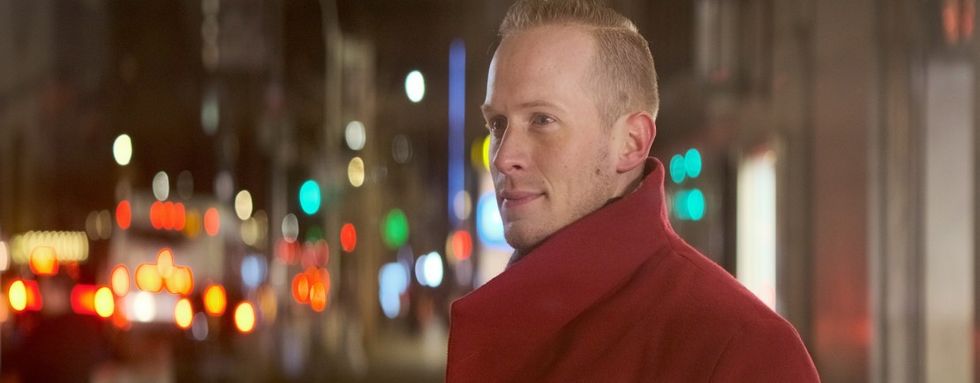
We did make one mistake on a couple of slow-motion shots, where we did not bump the ISO to compensate for the lower light the sensor gets when shooting faster framerates. But those cleaned up good enough in post.
Do I think the X-T3 is as good as the Sony A7SII in low light? Nope. But I do think it’s good enough for a lot of night shooting scenarios.
What About Auto-Focus?
One of the really cool things about the Fuji X-T3 is if you use native X-mount Fuji lenses, you get rather impressive autofocus. And there’s some quite well-regarded Fuji lenses out there. I like having total control of focus so I own a wireless follow focus. Although I can imagine situations where being able to get solid autofocus could be really useful. But, since we shot anamorphic we didn’t get to play with native lenses or autofocus on “Cup of Kindness”.
Post-Production
Post was a breeze. I did the editing in Premiere. Working with anamorphic was easy, you just have to interpret the footage to 1.33 (or whatever aspect ratio you shot to) and you’ll get the final and correct aspect ratio.
I did the color grade in DaVinci Resolve. I just imported my exposure-compensated LUTs and went to work. It didn’t take much to get the looks I wanted, and having 4K 10bit 4:2:2 gave me a very grade-able, very “thick” negative to work with.
Criticisms and Workarounds
No camera is the right camera for every job. Here’s some of the gripes I’ve heard with regard to the X-T3:
No Internal Stabilization
The biggest complaint about the X-T3 is its lack of internal stabilization. That’s a valid criticism. But it all depends on your shooting style. For us, Eric and I knew we’d fly the X-T3 on a Ronin-S or have it on a tripod for the vast majority of our shots. The Ronin-S and the X-T3 are a perfect match. This setup gave us tremendous freedom. Matched with an Atomos Shogun Inferno, we had a system that could give us big-budget shots on a tiny budget with a tiny footprint.
The X-T3 isn’t Full Frame
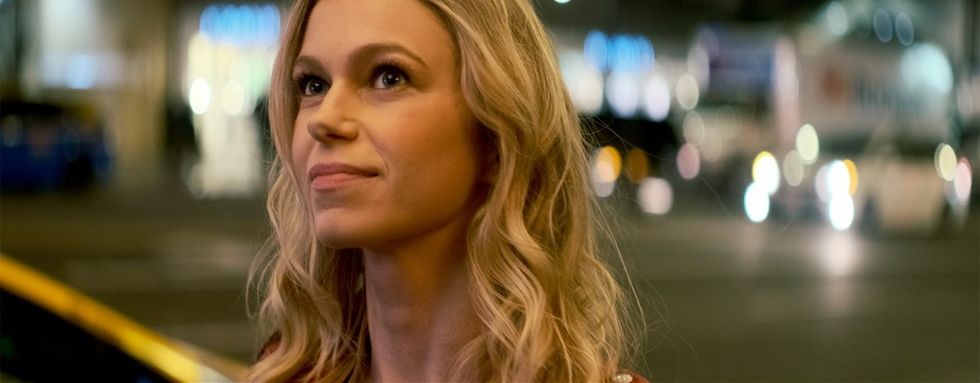
No XLR Inputs
This is also true. It does not. For “Cup of Kindness”, I was only grabbing ambient sound and did a lot of the sound work in post as foley. So it didn’t matter. Maybe Wooden Camera will make an A-Box for the X-T3 that’ll give it real XLRs someday. Or, just shoot dual system and use the Fuji’s internal microphones as scratch audio to sync up in post. Things like PluralEyes make this easy, but testing before you shoot is important.
Overall, these criticisms turned out to be totally not important for our short film.
Is the Fujifilm X-T3 Right for You?
Cameras are tools. It’s what you do with them that counts, and no camera is right for every project. For me, the X-T3 gives me an amazing tool in a very small package that fills an important hole in my camera lineup for clients and personal projects alike. I don’t think I’ll go on location without it, since it’s so tiny and so useful. Even on jobs where the main camera’s a fully-built cinema camera. And on some jobs, the Fuji is a camera that deserves to be the A Camera.
Overall, I was very impressed with my little Fujifilm X-T3. It can make gorgeous images in a tiny package. Here’s our end result for “Cup of Kindness”:
Interested in the Fujifilm X-T3? Here's more of our No Film School coverage here. Specs and price below.
Here are the full specs below.
26.1MP APS-C CMOS 4 Sensor
X-Processor 4 with Quad CPU
F-Log Gamma & 10-Bit Out
UHD 4K Video (up to 60fps)
2.16m-Point Phase-Detection Autofocus
3.0" Tilting LCD Touchscreen
Extended ISO 80-51200
Bluetooth and Wi-Fi
Price: $1,499.00
Patrick Ortman is a NYC and LA multi-hyphenate filmmaker who's worked with 12 Fortune 500s through his eponymous video agency. His short films and web series have been seen millions of times online and as official selections at more than 30 film festivals. To watch "Cup of Kindness" online, visit https://bit.ly/2F4Ay8S. You can get the latest on Patrick at https://patrickortman.com.
- Here Are The Fujifilm X-H2s Features Every Filmmaker Needs ›
- NFS @ Sundance: Community and Creativity at the No Film School Alumni Party ›
- Camera Rumors: Price and Specs Have Been Leaked for the Upcoming Fujifilm X100VI ›
- Fujifilm’s Stunningly Viral and Compact X100VI Camera is Finally Here ›
- Fujifilm Drops Fun New Instant Camera and Smartphone App Update ›
